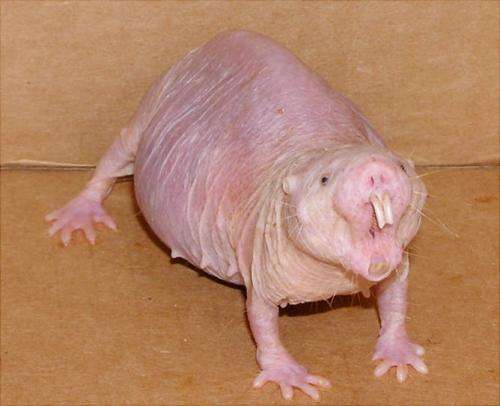We're all mammals – so why do we look so different?

It is easy to distinguish a mouse from a cow. But for members of the same class of mammal, where do such differences begin? In 2011, scientists discovered there were differences in cow and mice blastocysts, the tiny hollow spheres of cells which precede the development of the embryo.
So while adult mammals are easily distinguishable, it was remarkable that the researchers were able to still tell the difference at this extremely early stage of development. This early difference was largely due to the crucial process of gene regulation.
Mammalian species are all quite different in look and size, and have colonised all ecological niches – they can be terrestrial (like humans and mice), aquatic (dolphins and whales) and even aerial (bats). Like humans, all mammals have large, complex genomes – the DNA sequences in our cells. These contain the instructions which are used to construct our bodies and brains. However, the best-understood functional units in our DNA – our genes – take up only 2% of our genome sequence, and are extremely similar across non-marsupial mammals. So what makes us so different?
Classical studies – for example, those by geneticists Mary-Claire King and Allan Wilson, have shown that the major differences between mammalian species lie not in the genes themselves, but where genes are switched on and off – that is, in gene regulation.
Understanding gene regulation in mammals is very challenging. The DNA sequences that regulate our genes – so-called regulatory elements – are painstaking to identify. These sequences are spread across our vast genome, and are largely different for each of our tissues. To decipher gene regulation in mammals, we need to locate them and understand how they change as the animal evolves.
Gene regulation evolves

As evolution progresses and mammalian species diverge, various genes are switched on an off. So which aspects of our genome stay the same and where are the changes taking place?
New experimental and computational tools for DNA sequencing are now making it possible to identify regulatory elements and their activity with unprecedented accuracy and speed. These tools allow us to study gene regulation across mammalian genomes, as has been done for humans and mice, but much less so for recently sequenced genomes, such as those of species with unique adaptations - dolphins or subterranean cancer-resistant naked mole rats among them.
In a recent study published in Cell, we found the extent of gene regulation differences – the "on/off" switching – across mammals was astonishing. It is rare that the DNA sequences that regulate our genes show similar activities across mammals. More commonly, gene regulatory activities change rapidly as mammals evolve (though still over millions of years – for example, humans and chimps are separated by 6m years of evolution), and such differences probably lead to different genes switching on and off.
In fact, a good fraction of the regulatory elements that we identified in each mammalian genome were active in a single mammal (out of the 20 analysed), which suggests that these regulatory elements may be associated with recent evolutionary adaptations unique to a few species.
Repurposing
So how do such vast numbers of newly active regulatory sequences arise? Our findings suggest that, rather than acquiring wholly new DNA sequences that regulate genes, mammals derive most regulatory innovations from existing DNA – sequences shared to some extent by all mammals today and likely present in the ancestral species from which they evolved – but repurposed in a particular species.
This process resembles evolutionary tinkering, where continuous tweaking of existing DNA sequences can result in new patterns of gene regulation. The prevalence of this mechanism, as opposed to the generation of regulatory elements from newly acquired DNA, could in part explain the rapid evolution we see in mammals, and may have been pivotal in allowing mammals to efficiently colonise Earth's ecosystems. Essentially, continuous modifications in vast mammalian genomes within relatively small populations likely contributed to new evolutionary paths that allowed mammal species to diverge.
Many questions remain. Our results indicate how rapidly gene regulation can change in mammalian genomes, but further work will be required to fully understand the relative importance of the retained and new DNA sequences that regulate our genes, and how they cooperate to create species diversity while maintaining the organ functions found across vertebrates. And our findings could have profound implications for our understanding of human disease – in particular, the mechanisms by which rapidly evolving pathologies, such as cancer, hijack normal gene regulation and alter it to their advantage.
Journal information: Cell
Source: The Conversation
This story is published courtesy of The Conversation (under Creative Commons-Attribution/No derivatives).![]()


















